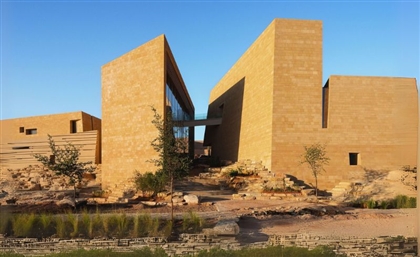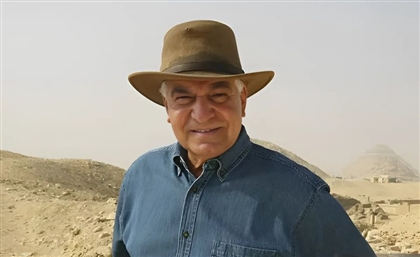Into the Valley: Exploring Saudi Arabia’s Hidden Oasis
In Saudi Arabia’s Tabuk region, Wadi Disah is an oasis of red cliffs, freshwater streams, and towering palms—an untouched wonder that remains one of the Kingdom’s most spectacular landscapes.
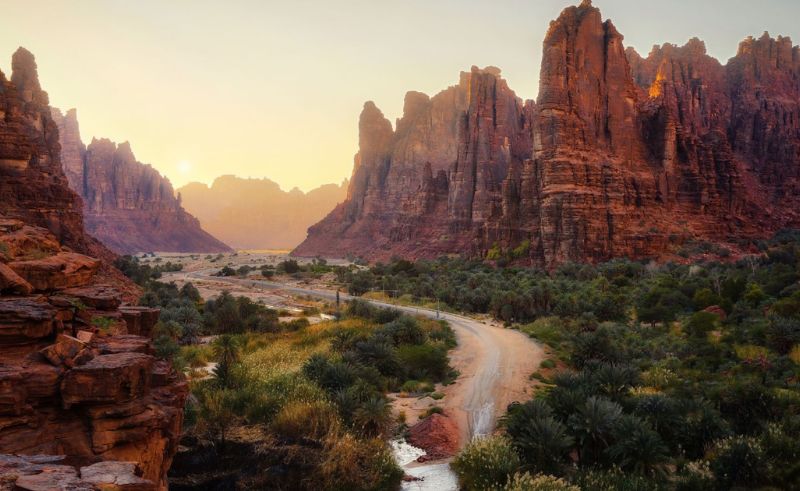
Few places in Saudi Arabia feel as improbable as Wadi Disah. Deep in the Tabuk region, hidden between sheer rock walls and a desert that stretches endlessly in all directions, this valley is an outlier—a world of flowing water, dense palm groves, and towering sandstone cliffs. For centuries, it was known mostly to locals and the occasional traveler who ventured into its depths. Now, it is gaining recognition as one of the Kingdom’s most spectacular natural wonders.
The journey into Wadi Disah is an experience in itself. Leaving Tabuk, the road stretches south for nearly three hours, cutting through a landscape that shifts from barren plains to rugged mountains, the horizon broken only by the occasional camel or a dust trail left behind by a passing truck. Eventually, the tarmac disappears altogether, replaced by a winding dirt track that leads toward Al Disah village, the last point of civilization before the valley swallows the road whole.
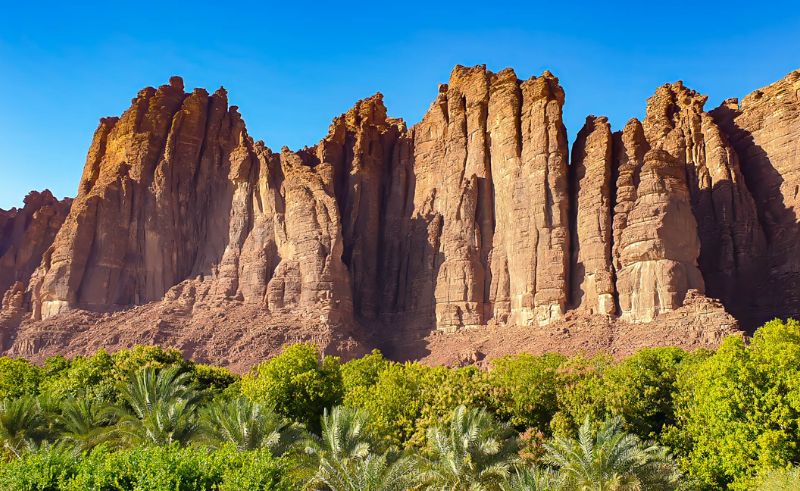
Wadi Disah does not announce itself with dramatic arrival points. Instead, the transition is gradual—the desert gives way to narrow canyons, where the light softens, the air cools, and the silence deepens. The only way forward is on foot, tracing the path of a slow-moving stream, its waters running clear and shallow. The rock formations here are monumental, some smooth and curved, others jagged and angular, shaped by centuries of wind and water. At times, the canyon narrows to a corridor so tight that sunlight barely filters through; in others, it widens into vast groves where palms and acacia trees stretch toward the sky.
Deeper into the valley, the past lingers in the rock. The Nabateans, the same civilization behind Petra, once passed through here, leaving their mark in the form of ancient carvings and unfinished tomb facades still etched into the cliffs. Even older inscriptions, some in Thamudic script, suggest that Wadi Disah was a place of movement, a passage through an otherwise unforgiving land.
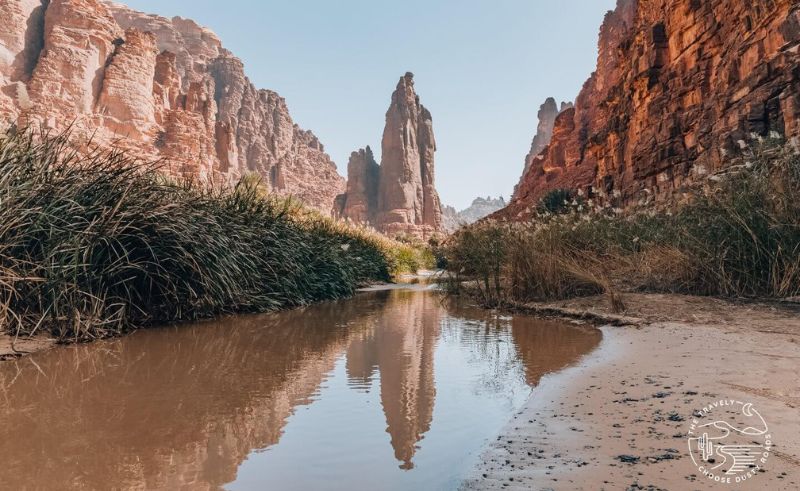
Unlike much of Saudi Arabia, where seasonal rains evaporate within days, Wadi Disah remains green year-round. Underground springs feed natural pools and flowing streams, creating a microclimate unlike anything else in the region. Wildlife thrives here—ibex, gazelles, and migratory birds all find refuge in the valley’s shade.
Despite its remoteness, Wadi Disah is changing. As Saudi Arabia’s Vision 2030 brings attention to the country’s hidden natural wonders, the valley has been identified as a future eco-tourism destination. For now, there are no visitor centers, no paved roads, no signs pointing the way. It is still a place where the desert meets water, where history is carved into the cliffs, and where a traveler can stand in absolute silence, surrounded by a landscape that feels ancient, untouched, and entirely its own.
How to Get There
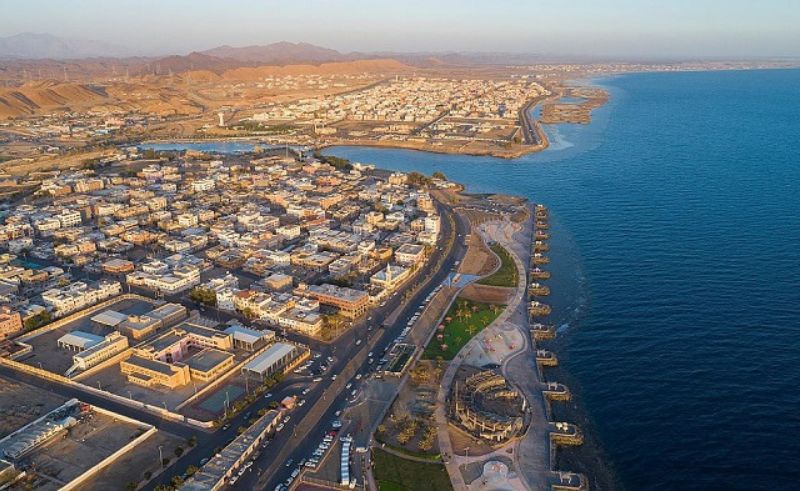
Fly into Tabuk – The closest major city, with direct flights from Riyadh and Jeddah (~1.5 hours).
Drive to Al Disah village – 260 km, approx. 2.5-3 hours from Tabuk. The last stretch requires a 4x4 for deeper exploration.
Where to Stay

Al Reem Luxury Camp (Disah) – A boutique desert camp offering private tents with panoramic views.
Juman Hotel & Waves Hotel (Tabuk) – Modern city hotels, ideal as a base before or after your trip.
Guided Tours & Local Operators
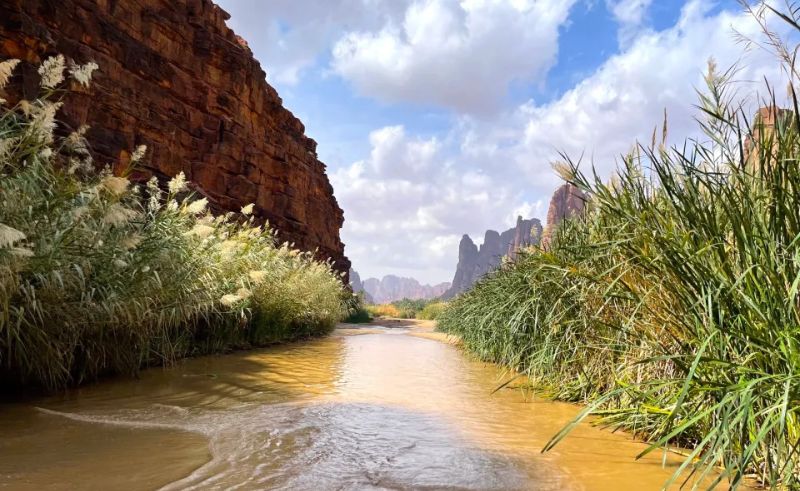
TourHQ – Full-day guided hikes and off-road exploration.
GetYourGuide – Tailored experiences through the valley’s natural and archaeological sites.
- Previous Article Pistachio Renga is Now A Thing
- Next Article Saudi Artist Huda Al-Aithan’s Playful Parametric Light Fixture
Trending This Week
-
Mar 29, 2025





